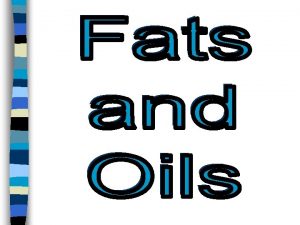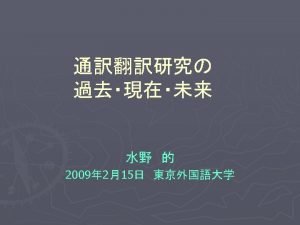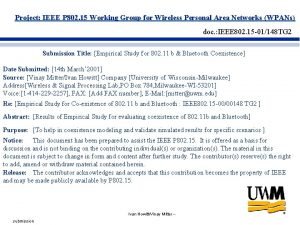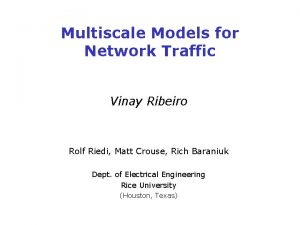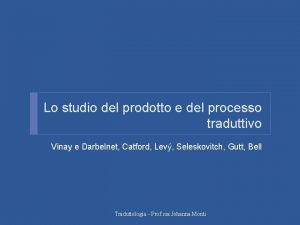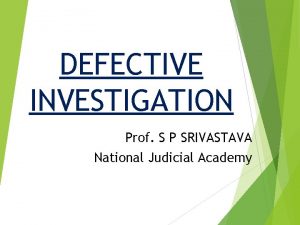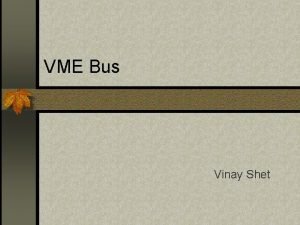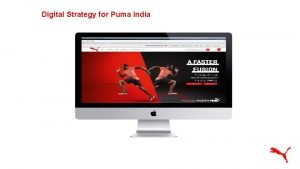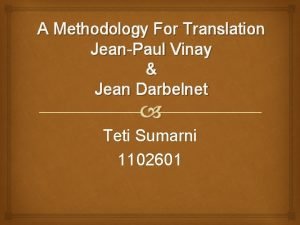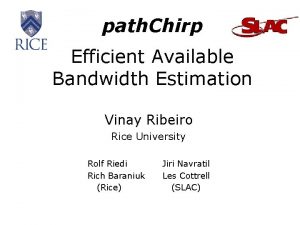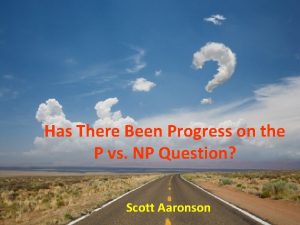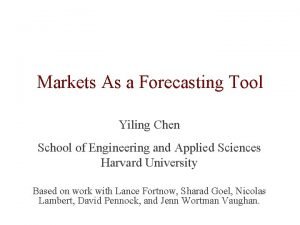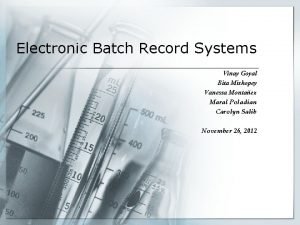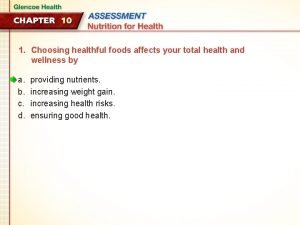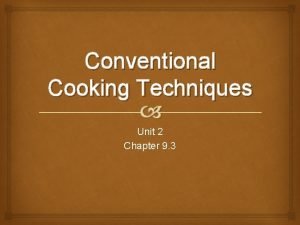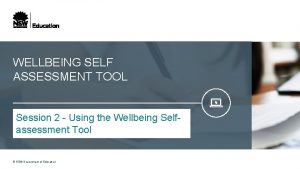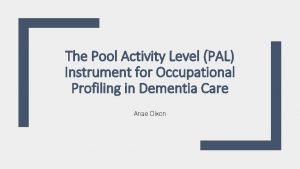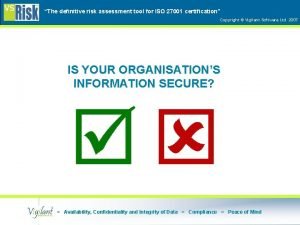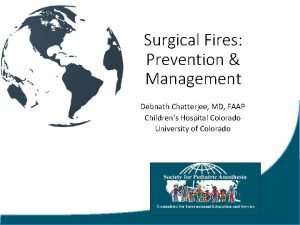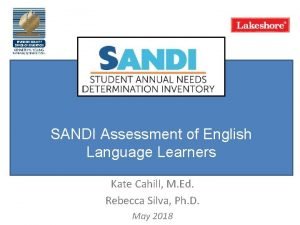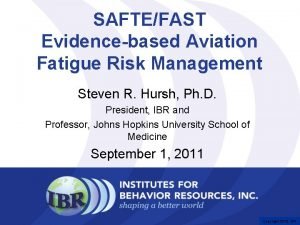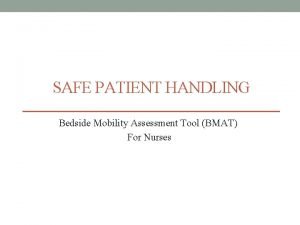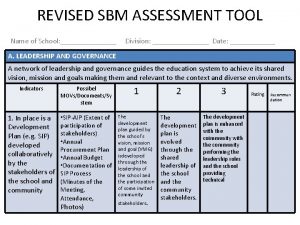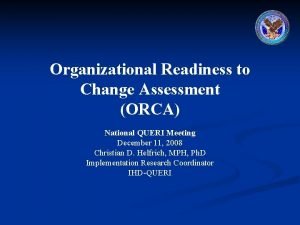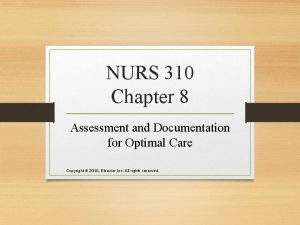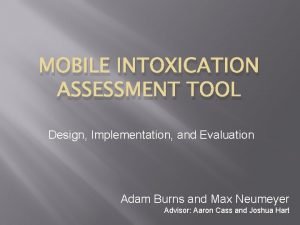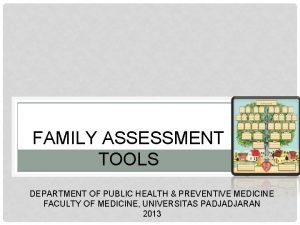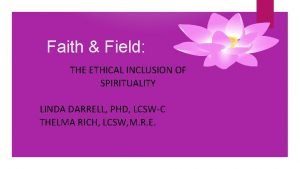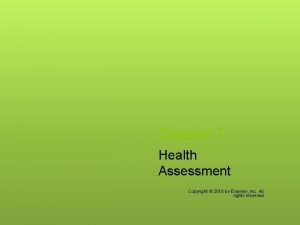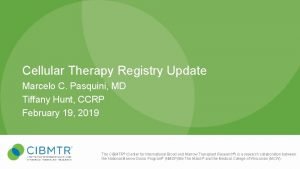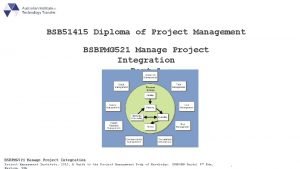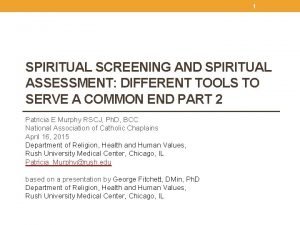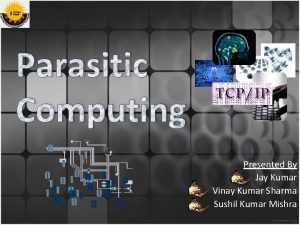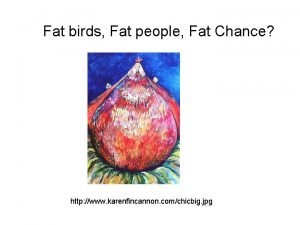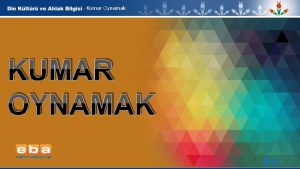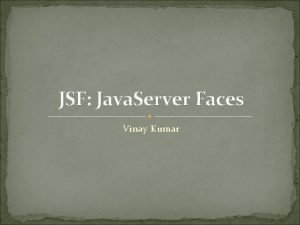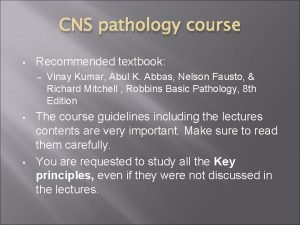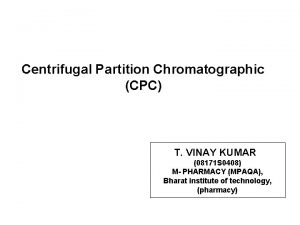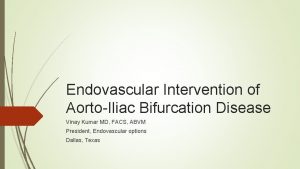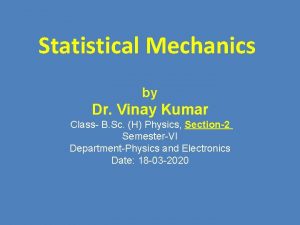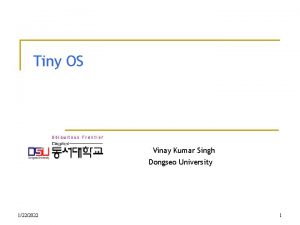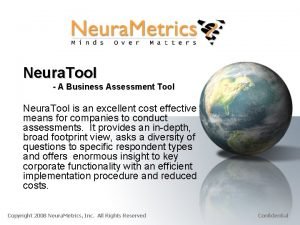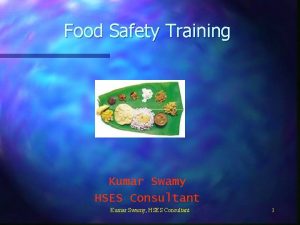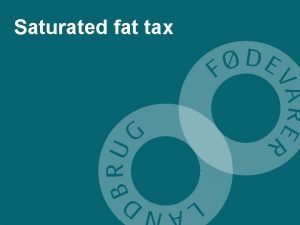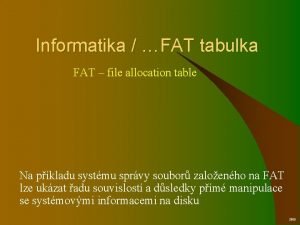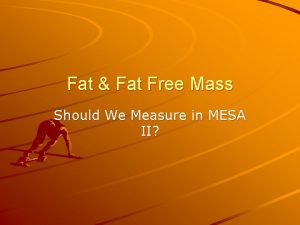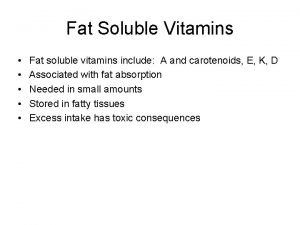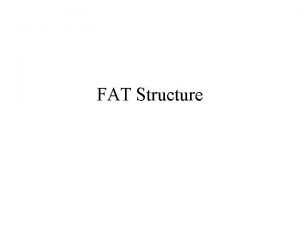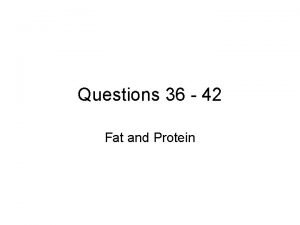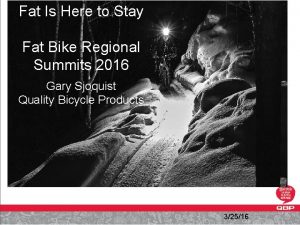Food Assessment Tool FAT 1 0 Vinay Kumar









































- Slides: 41

Food Assessment Tool (FAT 1. 0) Vinay Kumar V Nerella Akhil Kadiyala Dr. Ashok Kumar Department of Civil Engineering

Objectives Ø Create a pollution prevention tool to facilitate food processing facilities determine if they are in compliance with applicable laws and regulations. Ø Develop a user friendly tool that can award an index/score to each section of the facility that helps in better understanding of the improvements that can be made in different avenues. Ø To help the food facility understand the degree of compliance achieved and know areas of concern. Ø Provide alternative approaches for completing the task energy efficiently.

Methodology Ø FAT 1. 0 is developed based on the knowledge obtained from literature. Ø The tool is developed based on simple YES/NO/Not Applicable questions. Ø Points are allotted to all questions that are related to standard practices and regulations. Ø Recommendations are provided wherever necessary to make the facility compliant with regulations.

Tool Development Ø FAT 1. 0 is developed to give a performance index to food processing facilities and provide suggestions on how to improve in certain areas of concern. Ø The tool developed consists of different sections for different areas of the facility. Ø Points are allotted to each question if they are compliant with the applicable laws and regulations. Ø Total scores in each section are summarized towards the end of each section so that areas that need immediate attention could be identified.

Sections in P 2 E 2 Ø Ø Ø Ø Ø Packaging Waste Composting Clean-Up Procedures Preventive Maintenance Pesticide Use Food Banks Air Quality Regulations Drinking Water Waste Water Energy Use Ø Waste Management Ø Storage and Transportation Ø Environmental Emergencies Ø Environmental Contamination Ø Pollution Prevention Techniques Ø Storm Water

Home Page of FAT 1. 0

Questions on Packaging Waste Ø Reduction, reuse, and recycling of materials. Ø Labeling of products. Ø Policies and procedures dealing with waste. Ø Employee training.

Screenshot of Packaging Waste

Questions on Composting Ø On-site composting. Ø Food waste composting facilities. Ø Landfill. Ø Food by-products for local farmers.

Screenshot of Composting

Questions on Waste Supply Ø Public/private water supply. Ø Drinking water standards. Ø On-site sewage system. Ø Water meters.

Screenshot of Water Supply

Questions on Waste Management Ø Liquid industrial waste. Ø Hazardous waste. Ø Universal waste. Ø Recyclables.

Screenshot of Waste Management

Questions on Pest Control Ø Pesticide application. Ø Pesticide certifications. Ø Integrated pest management plan. Ø Monthly surveys.

Screenshot of Pest Control

Questions on Spill Prevention Ø Storage and transfer areas. Ø Spill prevention control and countermeasure (SPCC) plan. Ø Certification. Ø Review.

Screenshot of Spill Prevention

Questions on Preventive Maintenance Ø Storage and work areas Ø Equipment performance Ø Water conserving program Ø Employee training

Screenshot of Preventive Maintenance

Questions on Clean-Up Procedures Ø Edible and inedible food waste. Ø Spillage. Ø High pressure sprays. Ø Multiple purpose cleaners.

Screenshot of Clean-Up Procedures

Questions on Storage and Transportation Ø Storage area. Ø Ventilation. Ø Renewable fuels. Ø Monthly inspection. Ø Regulatory requirements.

Screenshot of Storage and Transportation

Questions on Food Banks Ø Shelter or soup kitchens. Ø Local health authorities. Ø Potentially hazardous food.

Screenshot of Food Banks

Questions on Food Contamination Ø Health problems. Ø Cleanliness. Ø Equipment maintenance.

Screenshot of Food Contamination

Questions on Air Quality Regulations Ø Process that create air pollution. Ø Environmental stewardship. Ø New source performance standard (NSPS).

Screenshot on Air Quality Regulations

Questions on Air Pollution Control Ø Air emission sources. Ø Asbestos notification. Ø Open burning.

Screenshot on Air Pollution Control

Questions on P 2 Techniques Ø Operating conditions. Ø Renewable fuels. Ø Alternative methods.

Screenshot of P 2 Techniques

Question on Energy Use Ø Energy Efficient ways. Ø Energy audit.

Screenshot of Energy Use

Questions on Storm Water Ø Storm water pollution

Screenshot on Storm Water

Evaluation Method Ø The total score of the facility is obtained by adding all the sectional scores.

Screenshot of Suggestions Sheet

Conclusion Ø A simple pollution prevention and energy efficient assessment tool has been developed for the food industry using Yes/No/Not Applicable questions. Ø The tool provides a summary of all the sections that a food processing facility deals with and provides necessary recommendations for pollution prevention and energy efficiency. Ø The sectional score helps in the detailed evaluation of compliance related issues and take corrective measures to become compliance.
 Trans fat vs cis fat
Trans fat vs cis fat Invisible fats examples
Invisible fats examples Deverbalization
Deverbalization Vinay mitter
Vinay mitter Vinay ribeiro
Vinay ribeiro Strategie traduttive vinay e darbelnet
Strategie traduttive vinay e darbelnet Vinay tyagi
Vinay tyagi Vme bus architecture
Vme bus architecture Vinay amdhare
Vinay amdhare Vinay & darbelnet 1958 - a methodology for translation
Vinay & darbelnet 1958 - a methodology for translation Vinay ribeiro
Vinay ribeiro P vs np
P vs np Vinay deolalikar
Vinay deolalikar Vinay goyal md
Vinay goyal md Dr vinay gupta
Dr vinay gupta Unit 2 food food food
Unit 2 food food food Sequence of food chain
Sequence of food chain Your body uses carbohydrates by breaking them down into
Your body uses carbohydrates by breaking them down into Cooking food uncovered without liquid or fat.
Cooking food uncovered without liquid or fat. Choosing the right cooking technique
Choosing the right cooking technique Fattom
Fattom Potter's tool is data cleaning tool
Potter's tool is data cleaning tool Wellbeing framework self-assessment tool
Wellbeing framework self-assessment tool Pool activity level dementia
Pool activity level dementia 27001 risk assessment software
27001 risk assessment software Teaching styles self-assessment tool
Teaching styles self-assessment tool Fire risk assessment surgery
Fire risk assessment surgery Sandi fast assessment
Sandi fast assessment Fatigue assessment tool
Fatigue assessment tool Bed mobility assessment tool
Bed mobility assessment tool Plan to address gap based on smepa
Plan to address gap based on smepa Orca assessment
Orca assessment Fancapes assessment tool
Fancapes assessment tool Intoxication assessment tool
Intoxication assessment tool Kirat risk assessment
Kirat risk assessment Screem family assessment tool
Screem family assessment tool Fica assessment tool
Fica assessment tool What is an experience assessment
What is an experience assessment Fancapes assessment tool
Fancapes assessment tool Icans assessment tool
Icans assessment tool Bsbpmg511
Bsbpmg511 7x7 spiritual assessment tool
7x7 spiritual assessment tool

